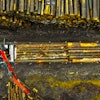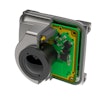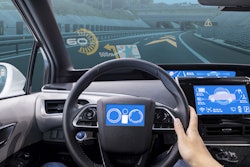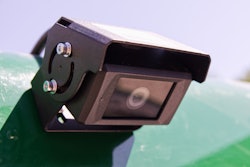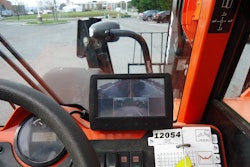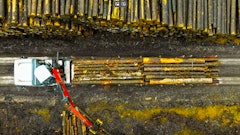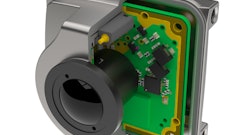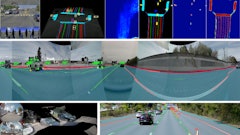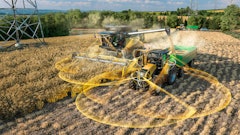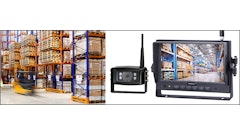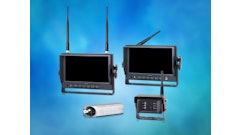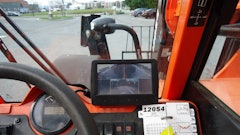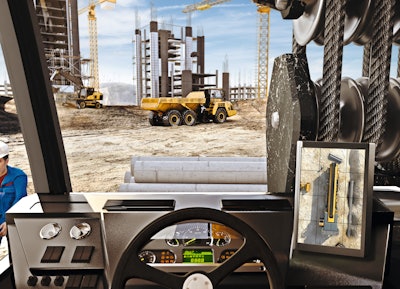
Rear-view cameras have been a feature of modern equipment for over a decade, and their benefits are obvious behind the wheel because they provide the operator a full view of what’s behind them. The latest generation of 360º surround-view, multi-camera monitoring systems take the principle of rear-view cameras to the next level.
There have been TV commercials for multi-camera monitoring systems that are offered as upgrades on some higher-end pickup trucks. On a screen in the cabin, the driver sees a view around the vehicle that seems as if it were taken from a video camera mounted several feet directly above the vehicle. The driver sees a view around the vehicle that shows obstacles, people and other vehicles without any interference from pillars or passenger’s heads.
The same type of systems are now available for commercial equipment as OE systems and as retrofits for existing equipment. These surround-view monitoring systems combine the inputs of multiple wide-angle cameras into a single image that appears to have been shot with a conventional lens placed above the equipment.
The system’s software “stitches” the video feeds from as many as six cameras into a single video image with no distortion or blind spots. These surround-view systems are ideal for commercial vehicles and heavy-duty trucks as well as agricultural and construction equipment.
Nate Stehman from Continental Automotive Systems said, “The ‘birds-eye’ view provides benefits for the operator and everyone working on the job site. In addition to creating a safer working environment, being able to see 360º around the equipment reduces driver stress and increases operational efficiency.”
These video systems eliminate blind spots to make drivers fully aware of everything that’s happening around the vehicle during any work activity. The view from above the equipment eliminates the guesswork of determining where obstacles, other vehicles, and personnel are so the vehicle or equipment can be operated in a much safer manner.
The most advanced 360º surround-view systems are compatible with CANbus and other general-purpose input/output (GPIOs) and feature software tools for easy customization to meet specific vehicle or worksite requirements.
Some systems feature touchscreen monitors and the ability to switch from the bird’s eye view to individual views from each camera. System software converts the wide-angle video feed into a conventional view for better clarity for the operator. The software also allows individual camera views that can be viewed in single, split-screen or quad-camera views. This gives the operator greater freedom and peace of mind, which can be helpful in situations where there’s a lot of activity in the immediate vicinity.
Four things to consider when choosing a surround-view system
When selecting a surround-view system for off-highway equipment there are several features and specs to consider:
- System software: Does the system’s programming tool offer the configuration capabilities needed to optimize the system for the application? Is the setup and calibration simple enough for customizing the system as needed? Is the system itself compatible with the vehicle network?
- Physical characteristics: Will the cameras and the system electronics be able to stand up to the conditions the equipment will face? What are the IP ratings for the camera and the electronic case(s)? What is the approved operating temperature range?
- Video performance: Users should ask questions such as: What is the sensor size of the camera? What is the dynamic range? What is the display resolution? Frames Per Second (fps)? What is the image latency? How well is the system protected against frozen frames?
- Electrical Characteristics: Is this system voltage compatible with the application? What are the cable and connector options? Does the system provide transient, overvoltage, and reverse polarity protection? What is the maximum allowable cable run?
An all-around smart choice for enhancing safety and reducing accidents
Safety on the worksite is essential to successful and profitable operations. Companies spend significant sums of money and manhours establishing safety procedures, conducting safety training, and tracking compliance with safety procedures. But in some cases, technology can add a dramatic and immediate boost to safe operations. Adding a surround-view, multi-camera monitoring system is one of the best ways to help ensure the equipment is operated safely.
